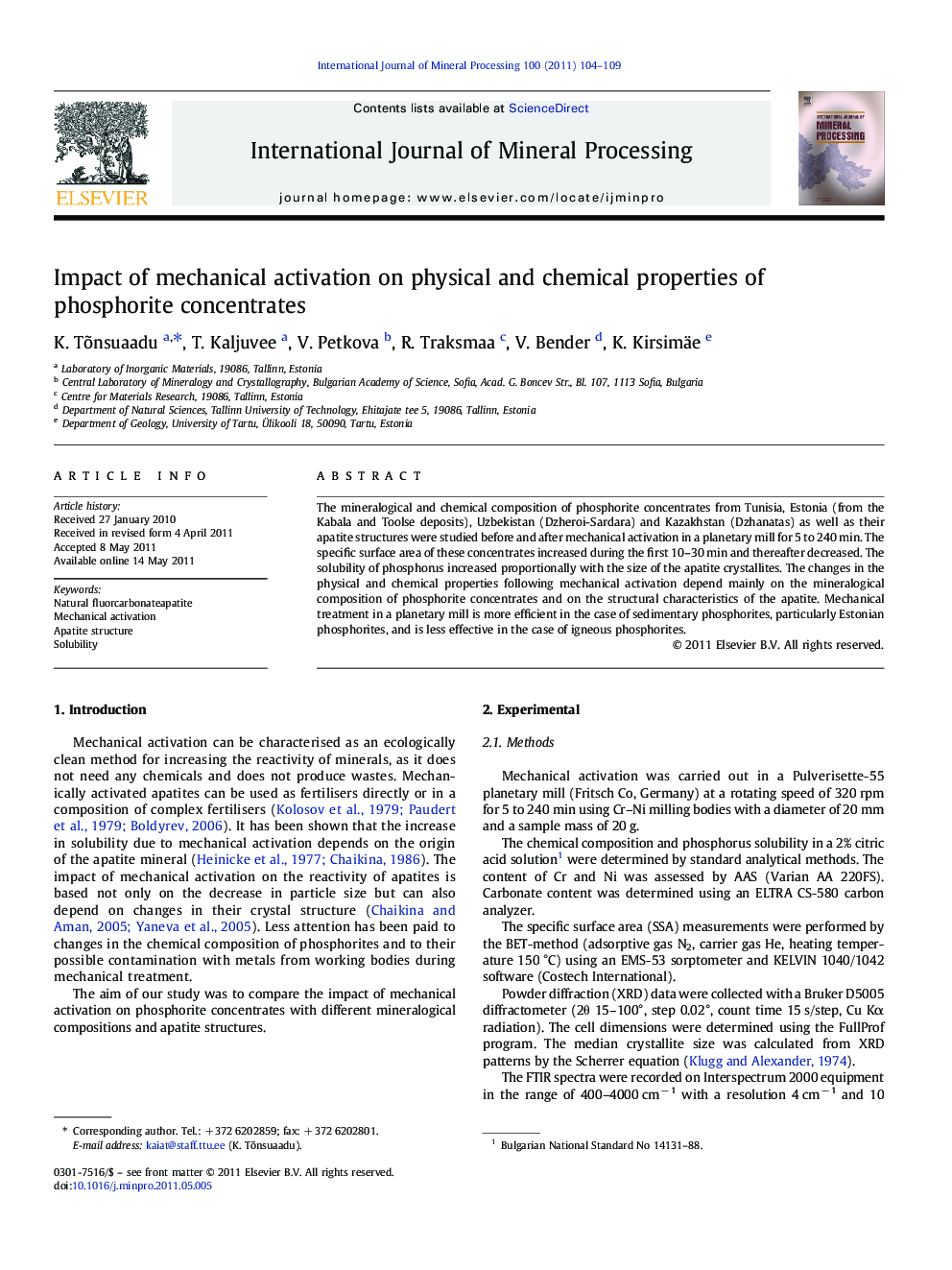| Article ID | Journal | Published Year | Pages | File Type |
|---|---|---|---|---|
| 214189 | International Journal of Mineral Processing | 2011 | 6 Pages |
The mineralogical and chemical composition of phosphorite concentrates from Tunisia, Estonia (from the Kabala and Toolse deposits), Uzbekistan (Dzheroi-Sardara) and Kazakhstan (Dzhanatas) as well as their apatite structures were studied before and after mechanical activation in a planetary mill for 5 to 240 min. The specific surface area of these concentrates increased during the first 10–30 min and thereafter decreased. The solubility of phosphorus increased proportionally with the size of the apatite crystallites. The changes in the physical and chemical properties following mechanical activation depend mainly on the mineralogical composition of phosphorite concentrates and on the structural characteristics of the apatite. Mechanical treatment in a planetary mill is more efficient in the case of sedimentary phosphorites, particularly Estonian phosphorites, and is less effective in the case of igneous phosphorites.
Research highlights► Mechanical treatment is effective for sedimentary phosphorites ► The effect depends on the initial mineralogical composition of the phosphate concentrate. ► Phosphorus solubility increases with decrease in the size of apatite crystallites.
